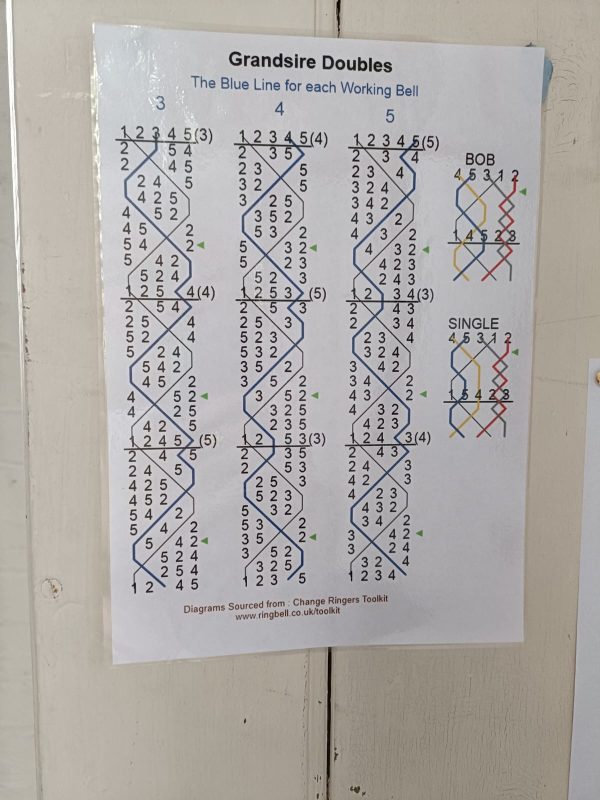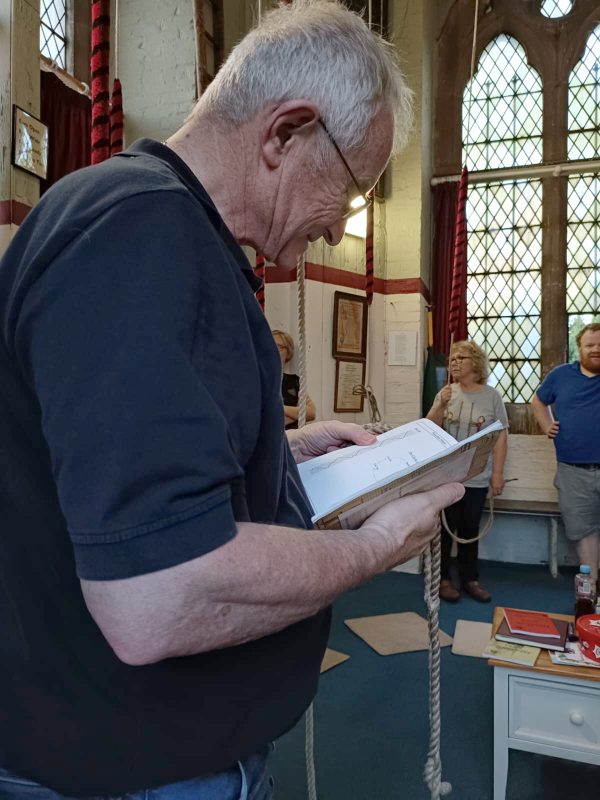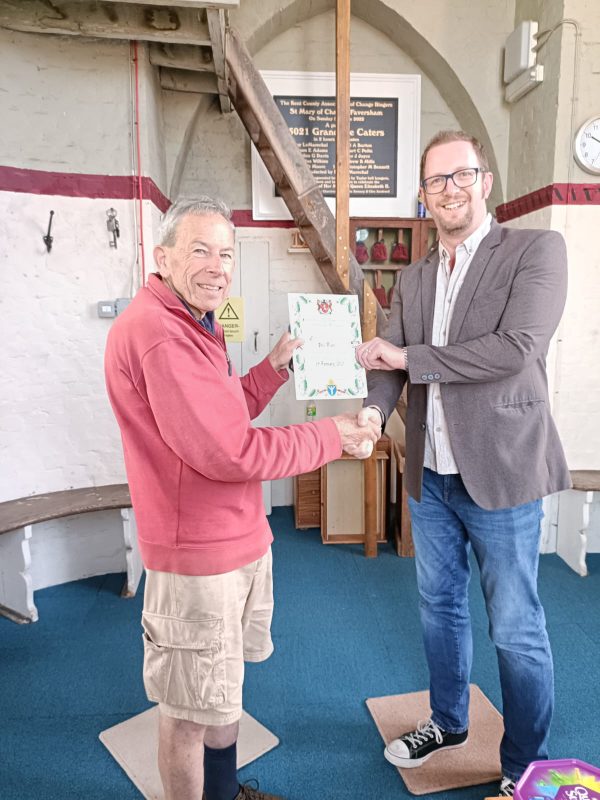Words Elizabeth Bergstone Photographs Elizabeth Bergstone

The energetic bell ringers of St Mary of Charity in Faversham
Twice a week, the church bells in St Mary of Charity’s bell tower ring out across the town of Faversham and over the surrounding countryside, as they have for centuries. On Sunday morning they are rung to announce the church service; and on Wednesday, the bell ringers are practising.
Jim Attwood is the Ringing Master and has been ringing bells for 44 years. A bell ringing session usually begins with ringing ’rounds’ – ringing consecutively down the scale, one bell after another in order. Having warmed up with a few rounds, the more structured ringing patterns, called ‘methods’, are tackled. Instructions as to which method is to be rung, and when to change from one method to another, are called out by the conductor – usually Jim. Although there are books where the methods are written out, and some of the charts can be seen tacked to the wall in the bell tower, actual ringing is done entirely from memory. Jim announces which method will be rung, and calls out when the ringers need to change from one method to another. The result we hear is the glorious, full sound of ‘change ringing’ – ringing the bells in an orderly ever-changing pattern.

Ringing Master Jim Attwood, gives new ringer Emelia Thorold her first lesson in bell ringing

A chart fastened to the belfry wall lays out the directions for ringing a method called Grandsire Doubles

A Peal Board in the bell tower at St Mary’s announcing the successful completion of a full peal of bells to commemorate Queen Elizabeth’s Platinum Jubilee
Other experienced ringers will sometimes be invited to conduct, such as Marion Quemby who began ringing in Bedfordshire, and continued when she moved to Faversham in 1985. Marion has been ringing for over 55 years, during which time she has had five children and 12 grandchildren.
Brian Coleman has the official title of Steeple Keeper at St Mary’s. He is responsible for ensuring that the bells and all the machinery in the bell tower are in good working order. Brian started bell ringing when he was a teenager, but gave it up when he joined the navy. Years later, he and his wife moved to Faversham where the sound of St Mary’s bells made him decide to take up bell ringing again. When not actually ringing the bells, Brian can be found in the space above the bell chamber, inspecting the bell mechanisms, oiling the machinery, and checking the bell ropes for wear.

Steeple Keeper Brian Coleman studying a book of methods
The bells of St Mary’s were completely refurbished in 2019/2020 when the Covid lockdown prohibited the bell ringers from meeting together in the tower, and the bells were silenced. By chance, this coincided with the receipt of a generous bequest from the estate of former local businessman Colin Sharpe, who had enjoyed the sound of the bells chiming when he lived on Church Street.
It occurred to St Mary’s bell ringers that the combination of these two circumstances would also be an ideal opportunity to add two extra bells, bringing the total number of bells up to 10. The Parish Council agreed and in due course, the artisans of the Taylor Bell Foundry arrived in Faversham to remove the entire set of bells to their factory in Loughborough. This was a major operation: each massive bell had to be lowered through a series of trapdoors built into the floor of each section of the bell tower above, then loaded onto a truck and manoeuvered through Faversham’s narrow streets, safely to its destination. The operation was a complete success: the bells were refurbished, rehung and retuned, an event last performed in 1933.

Tower Captain Simon Wolfe (left) hands ringer Phil Mace his certificate of membership in the Kent Country Association of Change Ringers

Marion Quemby begins the ascent of the 39 steps that lead to the belfry

At the end of a ringing session, all the bell ropes are coiled and attached to a ‘spider’ which is hoisted high into the belfry ceiling – safely out of reach of any curious explorer who might be tempted to have a try
Visitors to St Mary’s bell tower are welcome, and should contact Simon Wolfe, the Tower Captain at St Mary’s for details. His contact information, together with information about St Mary’s bells, performance and practice times are posted on the narrow doorway at the very back of the church leading to the bell tower. Once through the ancient blackened oak door, you climb the 39 steps of the spiral staircase until you arrive suddenly in the tall, airy bell chamber. Before beginning any ringing session, the bell ropes will be lowered from the ceiling, where they will have been carefully hoisted and secured on a ‘spider’ after the previous session. A bell tower can be a dangerous environment – some of those bells weigh over a ton! For safety’s sake follow the posted advice: ‘Ears open – eyes wide – feet steady – tongues tied’.
Text and photographs: Elizabeth Bergstone